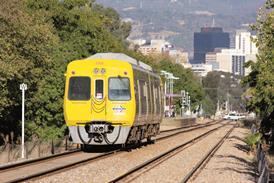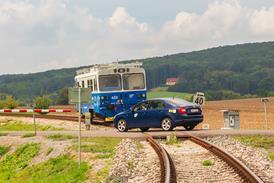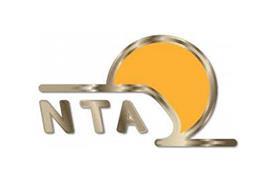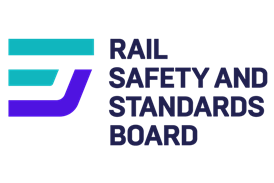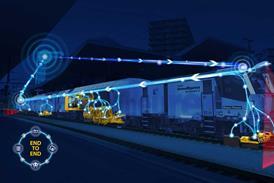
SWITZERLAND: The 57 km Gotthard Base Tunnel has fully reopened, 389 days after a derailed freight train caused extensive damage to the slab track in the western bore of the world’s longest railway tunnel.
‘The Gotthard Base Tunnel is not only a connection between German-speaking Switzerland and Ticino, but it is also the European connection between north and south, and the central piece of freight mobility in Europe. It can now once again fulfil this important role’, Federal Councillor Albert Rösti said at an event held near the southern portal of the tunnel to mark the reopening on September 2.
SBB CEO Vincent Ducrot thanked passengers and freight customers for their patience, and said ‘many employees worked under difficult conditions — day and night, to repair the tunnel. I would also like to thank them very much.’
The full reopening has reduced passenger journey times by 1 h compared to the traditional steeply-graded mountain route, and enables the implementation of a half-hourly north-south service which had originally been planned for December 2023.
All freight can now use the Base Tunnel, saving up to 75 min. SBB said up to 260 freight trains and 70 passenger trains per day can now use the tunnel; before the reopening, there were around 750 freight trains per week on the route.
Restoration

The repairs required 400 000 h of work underground at temperatures up to 40°C.
Debris clearance was finished on September 24, when 16 derailed wagons were removed. This was followed by the removal of 9 000 tonnes of concrete, and the installation of more than 20 000 newly cast concrete sleeper blocks. Around 7 km of track was renewed, and SFr1·75m was spent on a new gate on a crossover tunnel.
The total costs of the all works are estimated at SFr150m +/- 20%.
Replanning
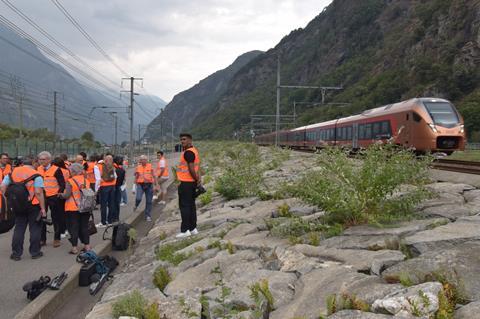
SBB diverted passenger trains over the old mountain route within an hour of the derailment at 12.48 on August 10 2023, and a stable timetable was in place by the following day. International passenger services were initially suspended, with people travelling to Italy having to change trains at the border stations. The first passenger trains ran through the base tunnel on September 29 2023, and services were then gradually ramped up.
The first freight trains were able to run through the undamaged east bore 12 days after the derailment, and trial operations through the repaired west tube of the base tunnel began on August 19 2024.
SBB said the constant optimisation of the service was possible thanks to the ‘excellent co-operation’ between the company’s divisions.
‘The rescue and repair works were very hard, but at the end it works very well’, SBB CEO Vincent Ducrot told Railway Gazette International. ‘Of course, we had scenarios what to do in the case of an accident in the tunnel, and we are very well-trained how to manage the situation and how to deal with the problems; and of course have enough resources in the case of a problem.
‘The derailment and the organisation of traffic afterwards was a huge challenge for the management: to manage the situation, we met every day in first the weeks, then twice per week.’
Wheel safety

In September 2023 Swiss transport safety board SUST confirmed that the derailment was caused by a faulty BA 390 wheel manufactured in 2008. This had a crack which grew over a period of months before violently fracturing.
SUST found no evidence of pre-existing operational defects, and it said current inspection technologies could not have detected the crack and prevented the accident.
SUST recommended that all BA 390 wheels should be included in an ERA broken wheels task force set up in 2017 after incidents with BA 314 and BA 004 wheels in Belgium and Italy.
ERA has recommended a different classification for wheel types identified as high risk, with new procedures in the case of signs of thermal overload such as after braking, as well as changes to wheel re-profiling.
Ducrot said ‘a broken wheel is a nightmare for the railways, but it can occur; and it is the reason why together with ERA we do the maximum to reduce the risk’.


